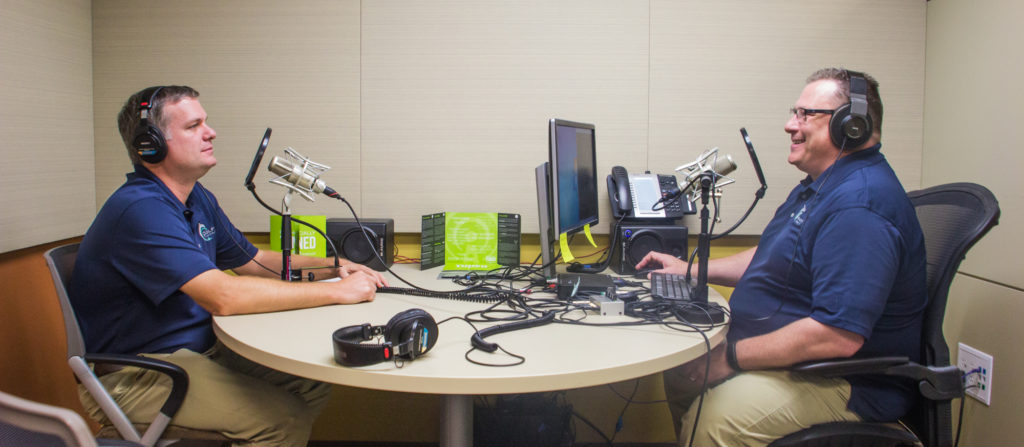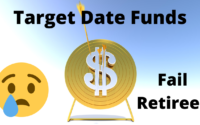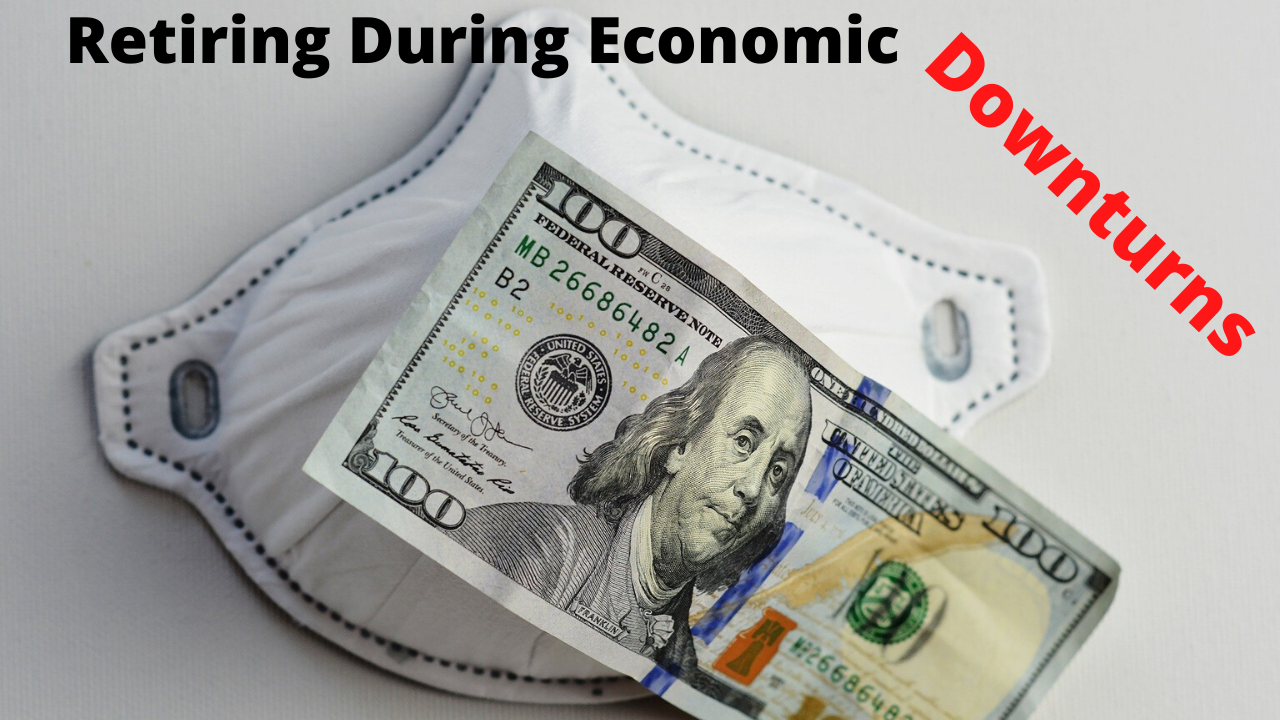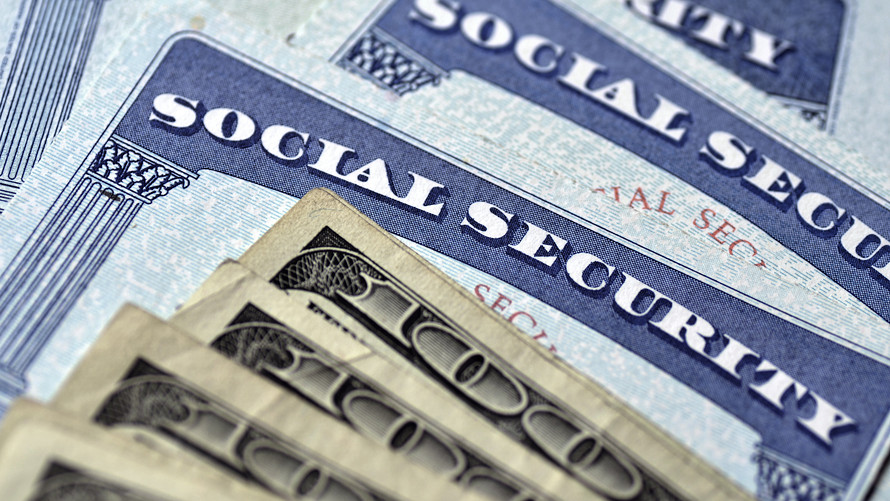New Rules On Required Minimum Distributions (RMDs)
Summary:
The SECURE Act was signed by the President on December 20, of 2019. This law has several major changes to retirement rules.
In this show we focus on the changes to the rules surrounding required minimum distributions, also known as RMDs. The age to begin RMDs was 70.5, but now it is 72. This change will impact retirees in a very specific way, and we’ll discuss the details of that and some strategy surrounding it.
Watch Video Version:
Podcast Transcript
Daniel Wendol 0:00
The SECURE Act was signed by the President on December 20, of 2019. This law has several major changes to retirement rules. Today, we’re going to focus on the changes to the RMD rules also known as required minimum distribution. This rule has changed. You used to take an RMD at 70 1/2. Now, you have to be 72 to start taking required minimum distributions. This change will impact retirees in a very specific way, and we’ll discuss the details of that and some strategy surrounding it.
Hello, and welcome to another Dolphin Financial Radio. I’m Dan Wendol, owner of Dolphin Financial Group alongside me is Tony shore. Tony, we’re going to talk about the new SECURE Act. It’s been in effect a couple of weeks now. I want to break it down very specifically and keep it tight today because we will do other shows on this. I’ll bring the lawyers into it as well. But today, I want to focus on the required minimum distributions and the changes that happened as a result of this new SECURE Act. Did you know that it passed?
Tony Shore 1:41
I did. Yeah, I had heard that. Yeah. Just before the end of the year in December, it got passed. I know there’s some good things and some bad things in there. But I think you wanted to focus on just a part of a specific area. That’s going to effect a lot of people and I think that’s good. A lot of changes in there really. And so we’ll probably break it up into a few shows.
Daniel Wendol 2:07
I think so because we don’t want to overwhelm. There’s a lot of different directions we can go, but let’s just do a quick recap. So, December 20 2019, it was the SECURE Act, and it stands for “Setting Every Community Up for Retirement Enhancement.” Yeah, that’s a mouthful.
Tony Shore 2:28
So basically, if you wonder what Congress does, and how they spend their time, and how they twist themselves into knots to come up with an acronym for SECURE.
Daniel Wendol 2:42
You know, it had to be some sort of intern that did that. You know? “We’re busy with the impeachment stuff. What do you want? I got it, I got it. I got it “SECURE”, you know, retirement?” So anyway, I’m going to focus today on the required minimum distribution part. We just did a show in 2019 on require minimum distributions and the details on it. If anyone listening wants to go back to that, actually I might take it down because now that the data is outdated.
Tony Shore 3:13
Yeah, we should probably axe that one and have this one. This is the updated fresh version for the new year.
Daniel Wendol 3:19
But I talked about some pretty cool strategies in that one! Well, we’ll touch upon them. So the big change to the required minimum distributions….
Tony Shore 3:27
Are you going to call them RMDs are you gonna spell it out each time?
Daniel Wendol 3:31
RMDs. Do you remember what you said it’s stood for?
Tony Shore 3:34
Really Massive Donut.
Daniel Wendol 3:36
That’s right. At least you are consistent from year to year. You remember the stupid jokes that you say. Anyway, the RMD age used to be 70 and a half which was annoying, because the half year was always confusing. Now it is just 72. Which is great and makes my life easier.
Tony Shore 4:06
Yeah. So so whatever year you turn 72 that’s the year you have to start taking required minimum distributions.
Daniel Wendol 4:13
Exactly. Except that first year, there’s that little loophole, that hasn’t changed. So if you turn 72 this you, you have until April 1st. They give you that three month leeway. And that’s usually because people miss it that first year. They just forget. It’s new. If you do that, if you turn 72 and you forget and you get in that window, you have to take to the following year. You have to take the one you missed and then the one for that year, so you get a double whammy, which can be tricky. It’s better than paying the penalty, which you do you know what that is?
Tony Shore 5:04
The penalty is like…isn’t it crazy like 50%? Right?
Daniel Wendol 5:09
Yes it is. We don’t want people missing their required minimum distributions. And for those that don’t know what they are, required minimum distributions are when you turn 72, the government does a calculation, the IRS does a calculation on your IRAs, and any deferred retirement accounts, and they say, here’s what percentage you have to take. This is based on life expectancy tables. And they say you have to take that out and spend it, or do whatever you want with it, but you need to take it out and pay taxes on it. And if you don’t, we’re going to hit you with a 50% fine on whatever you supposed to take out and then make you take it out anyway. So a lot of people get upset by that, but it is what it is. So now the rules have changed and now it’s 72. So we got an extra year and a half. An extra year and a half where the government doesn’t make us take money out.
Well, that’s good, actually. I mean, that’s a positive. That’s one thing this Act has change that’s really good for people, right?
It just gives them more flexibility. The big question I’ve gotten so far – what about me? What about me? I’m already taking my RMDs, does this change it for me? And the answer to that is…no. The SECURE ACT states, and I’m going to read it. “This applies to distributions required to be made after December 31 2019 with respect to individuals who attained the age 70 and a half after such date.” So if you’ve already reached 70 and a half before December 31 2019, and you had to take an RMD, you’re still on the old seventy and a half rules. You don’t get a bump up.
Tony Shore 6:44
You don’t get you don’t get any extra time or a year without a minimum distribution from your account. Of course, a lot of people out there wondering, why is this minimum distribution so important. I know you said there’s a penalty. To clarify for people, and this is what what I was confused about when I first learned of RMDs a few years back, and that is, well, it doesn’t sound like a bad thing to have to take…wouldn’t I need to be taking money out of these accounts any way to live on in retirement?
Daniel Wendol 7:23
I think the stat is roughly 80% of people take money…more than their required minimum. So that leaves about one in five that actually only take the minimum. Basically, the required minimum distribution isn’t designed to help the people. It’s designed to get tax revenue for the government. So when you have an IRA or a 401k, it has all been tax deferred. This doesn’t help the government any because you haven’t paid taxes. When you take your IRA money, 100% of it is taxable. So they want you to take it so that they can get tax revenue. A lot of people don’t want to pay taxes. So they delay and delay and delay until the last hour, which was seven and a half, now 72. But you’re right, most people need it. That’s the real key is. Are you one of those people, or what is your situation?
And by the way, the new rule birthdate is June 30, 1949. That’s where the cutoff is. So if you’re born after June 30, 1949, your new RMD age is 72. If you’re born before then, oh, well. You’re still on the 70 and a half rule. Who does it really impact? It’s for those who can afford to delay taking from an IRA, which is not most people. I have a lot of clients that don’t want to touch their IRA, they don’t need the money, which is a good thing, right? But the majority my clients actually need the money. Most people need to take money from an IRA in order to live. That’s the whole point of retirement. Then again, it’s also the point of life, right? You can can’t take it with you. You’ve got to get it out of there, sometime and spend it, or give it away. Which by the way, we did a show on qualified charitable distributions QCDs. That you can’t do until 70 and a half, they didn’t change that. So they left that at 70 1/2. They didn’t raise it to 72. So it used to be easy to remember that you can take your qualified charitable distribution from an IRA, not pay taxes satisfy the RMD at 70 1/2. So will people take money and do a qualified charitable distribution before 72 now? Maybe. So you still can but….
Tony Shore 10:04
People might not as much because it doesn’t coincide with when they have to withdraw. So for that extra time all, that’ll probably negatively affect charities for a while.
Daniel Wendol 10:17
I think that’s right. Theoretically, it could stay the same. People that are giving thier RMD to charity already, obviously don’t need the money. So they probably still don’t need the money. You know what’s going to happen, there is going to be more Roth conversions. And we’ll do another show on that. There’s a very specific group of people that we need to address and that’s the people that are close to retirement, or they’re hitting 70 soon. I have a lot of clients that have planned their RMDs as part of their income plan. So they delay Social Security until age 70. Then RMDs will kick in that same year. So they have this income stream planned on paper. Well, that’s going to have to change a little bit now, because they don’t necessarily need to take the RMDs at 70 and a half. We can delay that income for a couple more years. So what do we do in the meantime? Do we need that income still? Probably. Can we take it from somewhere else? Maybe. Maybe we start taking IRA money sooner than 70 and a half or 72. When I first started and, and even when my parents were first retiring, I remember that rule of thumb was “don’t touch your IRA.” Don’t touch the IRA. Delay it for as long as possible. And this rule is delaying it even longer now – 72. But my clients tend to take their IRA money sooner, even in their early 60s…and the reason being is because you have to play it off of taxes and take the IRA money when it’s most tax advantaged for you. That also means that it may make sense to take IRA money early in order to be able to afford to delay Social Security. I find Social Security Income much more powerful than RMD income for a number of reasons that we’ve talked about in the past. So there’s a lot of income planning that goes into this. This is going to impact income planning for a lot of people, particularly those that are nearing 70. This is boomer generation. They are getting to 70. This is when you are suppose to say – “Okay Boomer.” I don’t even know what that means, though.
Tony Shore 13:02
You know what? I work alongside a lot of 20 somethings and people in their early 30s. And I’m a little older than that, as you know. I’m not a boomer but I was giving somebody a hard time about what they were doing or some trend. Then I went to lunch, I came back and someone had written “Okay Boomer” on my whiteboard.
Daniel Wendol 13:43
HA! It’s interesting, there’s been a couple of big naysayers and prognosticators who are saying that because the boomer generation is going to be forced to take RMDs, the stock market is going to go down. They are saying that because the Boomers will have to sell stock to get out of the market and that will lead to a correction and put downside pressure on the market. Now that we bumped RMDs out a year and a half, maybe we’ve got a year and a half reprieve from that. I’ll be curious to see what they have to say about that.
Tony Shore 14:22
Yeah, well, exactly. That is that’s interesting. That’s a good point. Dan, you’re always bringing up the good points. I think what it is, is you look at things from a different angle, because I’ve been hearing a lot of people talk about the SECURE Act. That’s just another example of how you look at it from every angle, rather than just, the straight ahead, like most people. They just listen to what other people say about it and take that rather than really look at it. So now with RMDs it is critical, and I’m sure you work with your clients to make sure they’re set up ahead of time, and that they’re never missed, but you talked about something about the taxes. I want to go back to that for just a second, Dan, because when it comes to taxes, that’s why people might not want to wait until age 72 to start taking money out. They want to spread that tax burden out a little bit, I would think.
Daniel Wendol 15:38
Yeah, that’s it in your right. So taxes. Part of financial planning is tax planning. We spend more on taxes than anything else in this country, if you think about it. I am a big proponent of being strategic about income. Just because the government says now you can delay 72, doesn’t mean you should. If you delay Social Security, a good strategy, not not always for everybody, but a good strategy is to take from an IRA as opposed to taking Social Security early and delaying the IRA. Let’s say you delayed Social Security to 70 and you were delaying your RMD. You’re going to get the most income right then and there. Whereas if you’re going to delay Social Security 70, why not take IRA distributions prior to, when your tax bracket is lower? When your taxable income is lower. Income strategy and income planning isn’t just about getting the income you need when you need it. It’s also about getting income from an IRA when it’s most advantageous. As an example, let’s say you’re 65 years old, and you don’t need the income. You’re delaying your Social Security and you need $10,000 from your IRA, that’s it. I might say to you, why don’t why don’t we take $20,000 this year from your IRA? And they might say, I don’t need it. I don’t want to pay taxes on it. I hate paying taxes. But if we take it now, and put it somewhere where the government can’t tax it again, at least you’re paying taxes at your current tax bracket. If we wait till 70, you’re going to turn on your Social Security. So all of a sudden, your taxable income is going to go up. And you’re going to have to take more from your IRA because it’s a bigger amount. So all of a sudden, you can be paying more taxes when you’re 70. A lot of people have a trouble saying, no, I don’t need the money right now. Why would I touch it? It’s not about needing the money now. It’s about getting it out of the taxable situation now, while you can afford it, or while it makes strategic sense, or while we’re at historically low tax brackets. So this is going to play into tax planning, it’s going to play into income planning. I don’t think it’s going to impact as many people as many are saying. There’s going to be a lot of sensational news about this. I think there are other changes to the SECURE Act that are going to have an even bigger impact. Changes regarding stretching the IRAs, inheriting IRAs.
Another question I get about this is change to the RMD age bumping up to 72. So does that mean I have to take more out when I first start taking it? How’s that gonna work? Nope, that doesn’t change. The same life expectancy factors are used. So you have to take the same amount at age 72 that you used to. You get two free years of not taking money out. And then you take the same amount you would have anyway. However, I’ll say a caveat. I have read that there are new life expectancy tables being devised. So by the time you’re 72, the numbers will probably all change.
Tony Shore 19:22
That’s a great teaser, though, Dan, for our next show, or an upcoming show . that your going to cover and go into detail about the changes to stretch IRAs. What is a stretch IRA? How it benefited people and how that benefit is going away because of the SECURE Act.
Daniel Wendol 19:48
I think you’re right. The big impact isn’t on this RMD change. It’s going to have an impact on people that haven’t taken the income yet or that we’re planning to take income at 70 and a half. Just because they raised the age to 72, doesn’t mean you still can’t take it at 70 1/2. If that was your plan, and it’s still make sense, go for it. But now’s the time to revise it. The bigger impact is going to be on inheriting these IRAs, passing money on how to do that efficiently. The SECURE Act had some major changes to that. So we’re gonna have to talk about that separately. I’ll probably bring in the big guns, the lawyers, to talk about it with me. It’s going to have a major impact on long term estate planning. But the RMD- I want to get that out there and update our show on RMDs because the age has gone. I don’t think it’s going to have a dramatic impact on a lot of people but there’s a select few that it could and they need to know about it.
Thanks for listening to Dolphin Financial Radio





